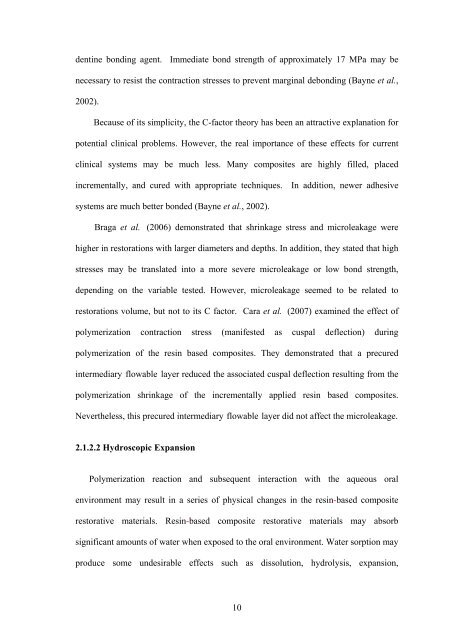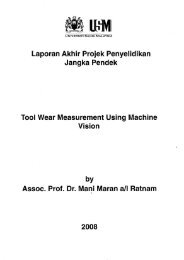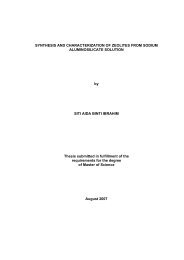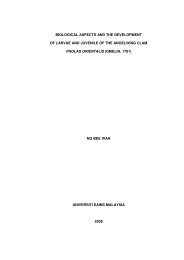microleakage in class ii composite restorations ... - ePrints@USM
microleakage in class ii composite restorations ... - ePrints@USM
microleakage in class ii composite restorations ... - ePrints@USM
You also want an ePaper? Increase the reach of your titles
YUMPU automatically turns print PDFs into web optimized ePapers that Google loves.
dent<strong>in</strong>e bond<strong>in</strong>g agent. Immediate bond strength of approximately 17 MPa may benecessary to resist the contraction stresses to prevent marg<strong>in</strong>al debond<strong>in</strong>g (Bayne et al.,2002).Because of its simplicity, the C-factor theory has been an attractive explanation forpotential cl<strong>in</strong>ical problems. However, the real importance of these effects for currentcl<strong>in</strong>ical systems may be much less. Many <strong>composite</strong>s are highly filled, placed<strong>in</strong>crementally, and cured with appropriate techniques. In addition, newer adhesivesystems are much better bonded (Bayne et al., 2002).(Braga et al., (2006) demonstrated that shr<strong>in</strong>kage stress and <strong>microleakage</strong> werehigher <strong>in</strong> <strong>restorations</strong> with larger diameters and depths. In addition, they stated that highstresses may be translated <strong>in</strong>to a more severe <strong>microleakage</strong> or low bond strength,depend<strong>in</strong>g on the variable tested. However, <strong>microleakage</strong> seemed to be related to<strong>restorations</strong> volume, but not to its C factor. (Cara et al., (2007) exam<strong>in</strong>ed the effect ofpolymerization contraction stress (manifested as cuspal deflection) dur<strong>in</strong>gpolymerization of the res<strong>in</strong> based <strong>composite</strong>s. They demonstrated that a precured<strong>in</strong>termediary flowable layer reduced the associated cuspal deflection result<strong>in</strong>g from thepolymerization shr<strong>in</strong>kage of the <strong>in</strong>crementally applied res<strong>in</strong> based <strong>composite</strong>s.Nevertheless, this precured <strong>in</strong>termediary flowable layer did not affect the <strong>microleakage</strong>.2.1.2.2 Hydroscopic ExpansionPolymerization reaction and subsequent <strong>in</strong>teraction with the aqueous oralenvironment may result <strong>in</strong> a series of physical changes <strong>in</strong> the res<strong>in</strong>-based <strong>composite</strong>restorative materials. Res<strong>in</strong>-based <strong>composite</strong> restorative materials may absorbsignificant amounts of water when exposed to the oral environment. Water sorption mayproduce some undesirable effects such as dissolution, hydrolysis, expansion,10
















